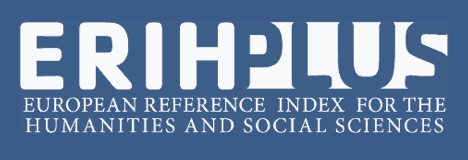Virtual reality in the classroom: geography teaching practice
Abstract
21st century society is marked by technological advances. They transform and alter social relations in spacetime, especially in the work category. And considering the explosion of the use of Virtual Reality - technology that simulates real reality emerging who uses it in an immaterial reality - in several areas. We may ask: how important is the use of Virtual Reality (VR) technology in the teaching of geography? The aim of this study is to analyze the socio-educational effects of using VR technology as a didactic resource for the practice and teaching of geography. For didactic production we work the social and environmental conflicts and what it is to be indigenous in Brazil in the 21st century. Among the results stand out greater engagement and empathy for content and geographical science.
References
EDITORA ELEFANTE. Xondaro. Disponível em:
FILME EM REALIDADE VIRTUAL: Fogo na Floresta. Produção de Instituto Socioambiental. 2017.
FREIRE, Paulo. Pedagogia da autonomia. São Paulo: Editora Paz e Terra, 1997.
INSTITUTO SOCIOAMBIENTAL (ISA). Menos Preconceito Mais Índio. Disponível em:
MARTÍN, Alfonso Gutiérrez. Alfabetiztazción Digital: algo más que ratones y teclas. Editorial Gedisa, Barcelona, 2003.
MOBILIZAÇÃO NACIONAL INDÍGENA (MNI). Indígenas exigem ‘demarcação já’ em ato histórico na esplanada dos ministérios. Disponível em:
PIRES, Hindenburgo Francisco. EAD e Ensino de Geografia: A política da escala e a escala da política. In: X Encontro Nacional de Prática de Ensino em Geografia – X ENPEG, 2009, Porto Alegre. Anais do X ENPEG. Porto Alegre: UFRGS, 2009.
PINHO, M.S.; KIRNER, C. Uma Introdução a Realidade Virtual. Minicurso do X Simpósio Brasileiro de Computação Gráfica e Processamento de Imagens - 14 a 17 de outubro de 1997, Campos do Jordão, SP.
PRENSKY, M. Digital Natives, Digital Immigrants Part 1. On the Horizon . Vol 9, no 5.
Setembro/Outubro, 2001.

This work is licensed under a Creative Commons Attribution-NonCommercial 4.0 International License.
Policy Proposal for Free Access Journals
Authors who publish in this journal agree to the following terms:
a. Authors retain the copyright and grant the journal the right of first publication, with the work simultaneously licensed under the Creative Commons Attribution License which allows the sharing of the work with acknowledgment of the authorship of the work and initial publication in this journal.
b. Authors are authorized to take additional contracts separately, for non-exclusive distribution of the version of the work published in this journal (eg publish in institutional repository or as a book chapter), with acknowledgment of authorship and initial publication in this journal.
c. Authors are allowed and encouraged to publish and distribute their work online (eg in institutional repositories or on their personal page) at any point before or during the editorial process, as this can generate productive changes, as well as increase the impact and The citation of published work (See The Effect of Free Access).





















